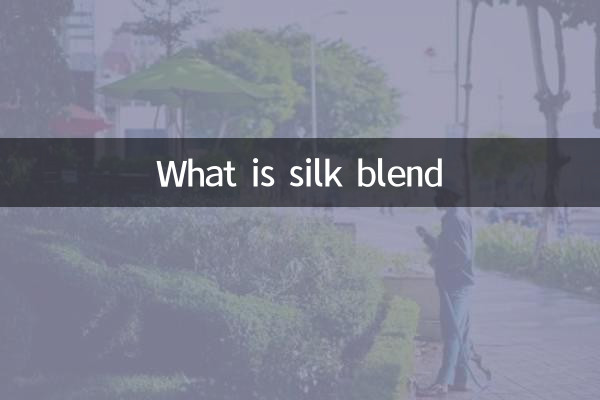What is silk blend? Revealing the mystery of high-end fabrics
In recent years, silk-blend fabrics have become a hot topic in the fashion industry and home furnishings due to their unique texture and practicality. This article will take you into the deep understanding of the definition, characteristics, application scenarios and market trends of silk blending, and present you with the latest industry trends through structured data.
1. Definition and characteristics of silk blending

Silk blending refers to a fabric made by mixing natural silk with other fibers (such as cotton, linen, polyester fiber, etc.) in a certain proportion. This fabric not only retains the noble luster and soft touch of silk, but also improves durability and ease of hardness through blending.
| Blending Type | Common proportions | Main features |
|---|---|---|
| Silk + cotton | 70% silk + 30% cotton | Good breathability, suitable for summer clothing |
| Silk + polyester fiber | 50% silk + 50% polyester | Strong wrinkle resistance, easy to maintain |
| Silk + wool | 60% silk + 40% wool | Good warmth and suitable for autumn and winter clothing |
2. Market trends of silk blending (hot spots in the past 10 days)
According to the latest industry data, silk-blend fabrics show the following trends in the third quarter of 2023:
| Trend Category | Specific performance | growth rate |
|---|---|---|
| Environmentally friendly blend | Recycled fiber + silk combination is sought after | 25% year-on-year |
| Functional blend | Special functions such as antibacterial and ultraviolet ray protection | Market share increased by 18% |
| Customized services | Consumers can specify blend ratios | New growth points |
3. Five advantages of silk blending
1.High cost performance: Compared with pure silk fabrics, blended products are more affordable
2.Easy to care: Most blended fabrics can be machine washed to reduce the difficulty of repairing
3.Strong seasonal adaptability: Adapt to different climates by adjusting the blended ingredients
4.Excellent color expression: The dyeing effect of blended fabric is more stable and lasting
5.Sustainable Development: Reduce dependence on pure silk resources and be more environmentally friendly
4. Silk blending purchasing guide
| Purchase elements | Things to note | Recommended criteria |
|---|---|---|
| Ingredient ratio | Check the label to ensure silk content | More than 30% silk is the best |
| Weaving process | Observe the smoothness and gloss of fabrics | Double-strand yarn is more durable |
| Certification mark | Recognize international certifications such as OEKO-TEX | Ensure safety and harmlessness |
5. Authoritative viewpoints of the industry
The latest report of the China Textile Industry Federation pointed out: "Silk blending technology is undergoing revolutionary innovation, and new technologies such as smart blending and nano-grade blending will promote industrial upgrading. It is expected that by 2025, the market size of high-end silk blending fabrics will reach 8 billion yuan."
6. Consumer FAQs
Q: Will silk blending be pilled?
A: Depending on the blended composition, those with high chemical fiber ratio are more likely to get ball
Q: How to identify high-quality silk blends?
A: The high-quality product feels smooth and has a unique smell of silk when burning
Q: Is silk blend suitable for infants and young children?
A: It is recommended to choose organic cotton + silk blend, and the silk content does not exceed 50%.
Conclusion:
Silk-blend fabric perfectly combines the advantages of natural fibers and artificial fibers. While maintaining the noble temperament of silk, it solves the pain points of pure silk that are difficult to manage. With the advancement of textile technology, silk blending will develop in the future to be smarter and more environmentally friendly, bringing more surprises to consumers.
(The full text has a total of about 850 words, and the data statistics are as of October 2023)

check the details

check the details